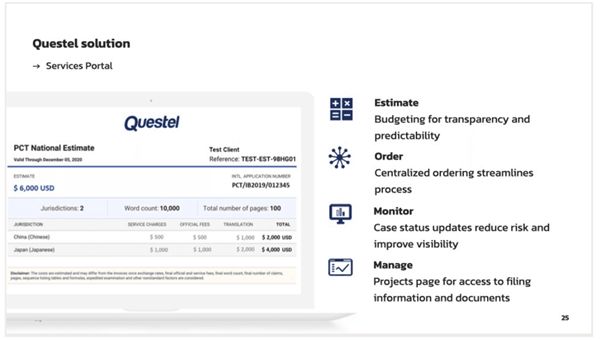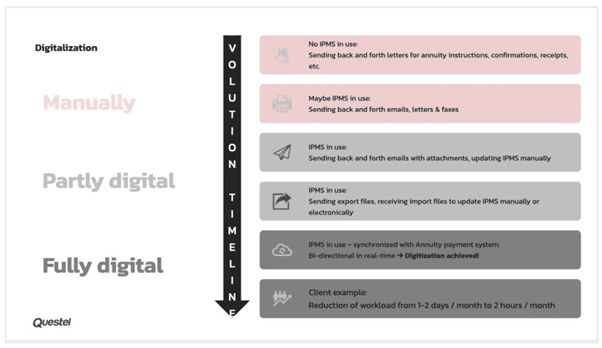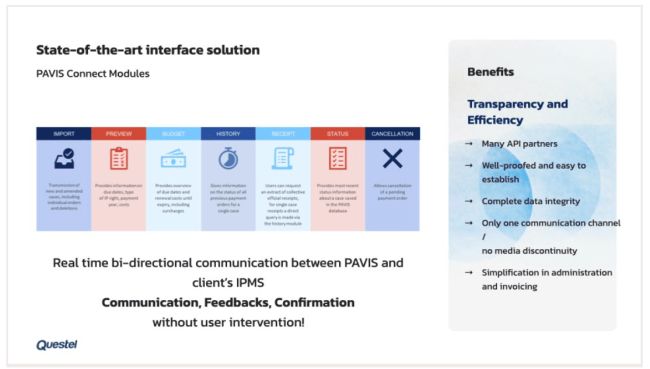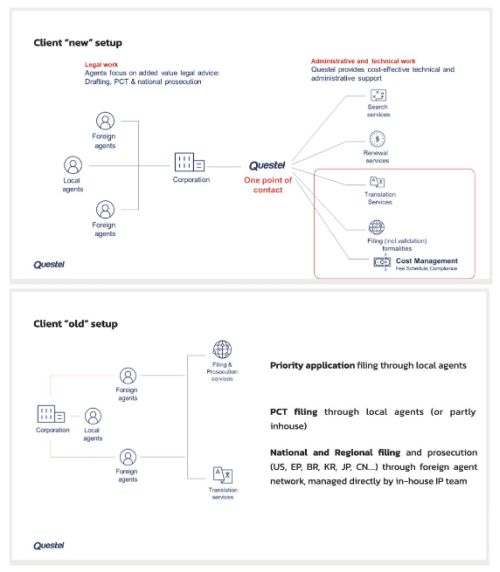OVERVIEW
From deadline reminders to project collaboration, data verification, and the automation of entire workflows, digitalization is revolutionizing traditional intellectual property management practices. Questel's Nathalie Mantrand-Foussadier discusses how to make the most of today's digital tools, including the benefits of centralizing IP data and processes.
In the past few decades, digitalization has brought many of our traditionally paper-based intellectual property management practices online, but not every IP department is able to make the most of the digital tools at their disposal. Having access to technology is only part of the solution, IP leaders also need to consider how to best adapt their IP management models to make the best use of existing and future tools.
Evolution in Corporate Intellectual Property Management
Traditionally, the in-house IP department would communicate solely with their local agents, leaving to them the choice and management of foreign agents, local search firms, annuity providers, translation agencies, and filing companies (see image 1, below). Today, however, most corporate IP teams deal directly with their foreign agents and IP providers, separating legal tasks from administrative and technical work, so agents focus only on added-value legal advice (see image 2, below).
This new model delivers greater insights and control as well as cost benefits. However, managing multiple vendors (and tools) can result in more administrative workload for in-house teams, from procurement to cost control and from correspondence to invoicing.
As a result, many companies are now switching to a centralized IP services model, which continues to separate legal advisory services, but now entrusts technical and administrative IP services to one single point of contact (see image 3, below).

Images 1-3: The evolution of intellectual property management over time
Drivers for Centralized Intellectual Property Management
Key drivers in this switch to a centralized IP services model include time, budget, efficiency, transparency, risk management, and quality control.
- Time and money: Internal pressures from top management, including budget constraints and hiring freezes, have led in-house teams to review how and where they spend their efforts. Keeping dockets up-to-date and meeting deadlines are non-negotiable, but with the large volume of work for paralegal teams that this entails, there is a need to simplify foreign filing, annuities/renewals, recordals, and other IP workflows.
- Efficiency and performance: IP departments may have access to fewer resources, but they still need to perform the same functions. With a leaner team, there is less time and bandwidth, and administrative tasks can quickly swallow up available resources.
- Risk and quality: Managing and maintaining a reliable network of agents also requires considerable investment of time. Proactive quality control is crucial given the risks associated with missed deadlines and poor or inconsistent translations.
- Transparency and invoice management: Cost and
invoice management can add further headaches, with multiple
inconsistent and often convoluted invoices to reconcile and the
risk of a balloon effect on charges even with a pre-agreed schedule
of fees.
Benefits of Technology and Automation
Digitalization provides solutions to all these challenges by enabling IP departments to centralize record management, automate workflows, verify data, analyze invoices, and boost collaboration. Standardized and certified 'tech-enabled' processes reduce risk, improve quality and increase consistency and productivity. With one partner, one point of contact, one instruction, and one invoice to manage, IP departments save administrative time, gain transparency into IP spending, and benefit from the economies of scale that come with high-volume negotiated rates.
Through Questel's secure IP services web platform, for example, clients can estimate, place, track, and access delivery of all services at no additional subscription cost. This centralized workflow platform is fully integrated with our docketing and AI-powered tools and our free cost management service—and delivers complete transparency with consolidated invoicing, detailed invoices, flat-fee pricing models, and no hidden costs.

How IP Digitalization Works in Practice: Renewals
Let's take renewals as an example. In the last century, renewals management involved a lot of time-consuming manual work. With so many different and complicated legal systems and formalities to understand and comply with, and such a big risk of errors, companies faced expensive fees and little access and control.
Today, many IP departments are still paying unnecessary effort and costs, spending too much time, resources, and budget on administrative work that does not add value to the company. Now, however, there is a clear trend towards automation of this highly specialized service and the benefit that it brings, not least that it is easy to use, highly efficient, highly reliable, and much cheaper than manual processes.

IP Renewals Digitalization: A Use Case
An international automotive braking supplier with approximately 3,500 live patent families contacted Questel for support to reduce the administrative workload of annuity management and improve data quality.
By enabling fully automated, secure (encrypted), and real-time communication between its IP management system (IPMS) and the PAVIS/Questel annuity payment service, we could ensure a direct and immediate data exchange. This eliminates the manual steps required to send data or receipts by email and log invoices, saving the client time and resources. Thanks to the synchronized databases and immediate processing, the client always has access to up-to-date information about their renewals.

We also serviced additional specific requirements, including
- → Flexibility through tailor-made invoice formats and monthly invoicing;
- → Elimination of time-consuming process steps;
- → Flexibility through extremely short cancellation periods;
- → Problem-free introduction of PAVIS Connect with the PAVIS support team always available by phone;
- → Benefit of easy reporting and budget forecast at only a single click;
- → Encrypted data exchange;
- → Support of a trusted partner with change management expertise.
Digitalization of IP Translation: We've Also Got an API for That
By fully automating processes, digitalization moves vital tasks away from email, improving security, transparency, and control and reducing workload and risk of error. However, for IP departments to make the most of these digital tools, they also need them to be linked, else they will need to manage multiple log-ins or require multiple data entry steps.
Questel's IP Services Portal can be used as a standalone solution or directly integrated into an existing IPMS (via API) to ensure data is shared seamlessly between systems. For example, we supported another international client in the automotive sector (this time with around 2,000 live patent families) to make a significant impact on efficiency and cost savings by simplifying foreign fling for them by using our QSP and comprehensive cost reduction solution.
In the client's 'old' set-up, they were filing priority applications through local agents, PCT filing through local agents (or party in-house), and managing national and regional filing and prosecution (US, EP, BR, KR, JP, CN...) directly through their network of foreign agents.
Under the new set-up, local agents continue to provide the added-value legal advisory services (including drafting and PCT and national prosecution), but Questel manages all the administrative and technical work required for foreign filing, including search, translations, filing and validation formalities, renewals, and cost management (fee schedule and compliance management).

The client is very satisfied with the new process, as the translation quality has been maintained, the onboarding of the new process was fairly smooth, the company can continue to rely on its existing network for prosecution work, and the paralegal team has saved time and gained efficiency now it has only a single point of contact for translations and filing instructions. Questel now manages the agent network on their behalf, controlling costs, consolidating invoices, and negotiating a global fee schedule on the client's behalf.
The content of this article is intended to provide a general guide to the subject matter. Specialist advice should be sought about your specific circumstances.

